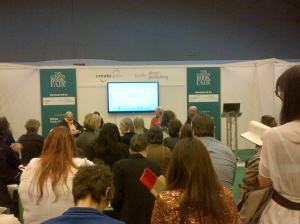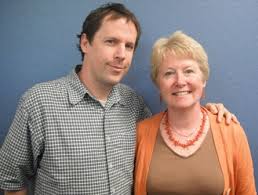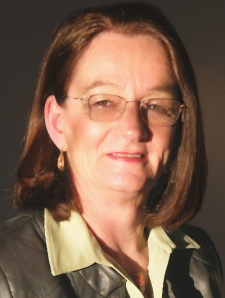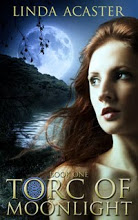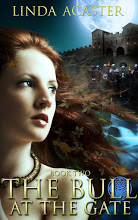What made you decide to self publish?
The book in question, The Worst Country in the World, is about the early days of colonial Australia as seen through the eyes of my ancestress and her family. I’ve called it a ‘dramatised’ version of my family history as I’ve hooched up bits of it in order to make it more generally appealing. So it’s a mix of history, family history, fiction and personal memoir, in other words a hybrid and not necessarily aimed at the mass market. I didn’t want to waste time therefore sending it to agents. Besides which self publishing was just beginning, it seemed to me, to look like a real possibility.
How did you find out how to go about it?
I read everything I could lay my hands on about self publishing – books and blogs – attended conferences and chatted to other writers. I found it all pretty overwhelming. I didn’t think for a moment I could handle everything myself so I got quotes from several different specialist companies for doing it for me. They ranged from £3000 to around £125, and I found as I went I was getting more and more confused about precisely what they were quoting for. It is, to say the least, a minefield.
Why did you decide to do the whole thing yourself?
Partly because of this confusion, partly because I’m a control freak and wanted a perfect result, but mostly because of other writers who convinced me it was possible to do it yourself without any specialist IT skills or software. And of course because it’s a useful set of skills to acquire.
And how was it?
A nightmare. I was following different sets of instructions that not only contradicted each other but were almost all unnecessarily complicated. For example I was told to put the manuscript through Notepad in order to clear it of all coding, but this meant I lost the italics, which I’d used in the book to distinguish between genuine quotes and what I’d made up, and it took me forever to put them back in. I realised too late this was completely unnecessary. As a result it took me much longer than I anticipated and I spent a good deal of it tearing my hair, which at my age I can’t really afford to do.
What made you persist?
Doggedness. Once I’d embarked on that path I had to get to the end of it. I was looking all the while for practical hands-on workshops but couldn’t find any, which is why I decided to set them up myself.
Are you glad, finally, you decided to go down this particular self publishing route?
Yes, without question. It’s been to say the least an experience, I feel I’ve crammed a year’s learning into a few weeks. But I’m a great believer in diy – there’s nothing like fighting your own way through a maze to help you understand that maze and, hopefully, help others through it.
What was the most difficult part of the process?
Having eventually figured out the nuts and bolts the most challenging part of it all is unquestionably the marketing. Many or maybe most writers are solitary people and not necessarily much good at blowing their own trumpets. I’ve yet to fully master this particular conundrum and like many others, I find it difficult to find the time and energy to both write books and then to publish and market them. (For more on marketing have a look at the marketing page.)
What is the best thing about self publishing?
You get to control everything yourself.
What is the worst?
You get to control everything yourself. There is no one else helping you, no one else to take the responsibility or blame if you don’t come up to scratch.
How did your books sell?
Moderately. The Worst Country sold some copies, mostly in Australia, not enough to retire on, or even give up the day job. I was encouraged by people’s reaction to the book itself, which exceeded my expectations and some, but discouraged by the difficulty I had getting bookshops, in particular in Australia, to take it. They were much tougher to convince than the equivalents here in the UK.
Would you self publish again?
Without question. It’s a bit like having a baby, once you’ve done it you know what to do next time. And you’ve still got the clothes and the equipment from the first, so why waste them? (NB I am not suggesting these are sound reasons for having babies by the way.)
What are the pros and cons of self publishing for the book industry, and readers, as a whole?
Pros – anyone can publish anything they like. Some of it is rubbish, but hopefully most of it is not. It takes a huge amount of effort to write a book after all. It also releases writers from the straitjacket of pigeon-holeable genres, and specified page numbers, which opens the door to all sorts of new and strange ideas and means a book is only as long as it needs to be.
Cons – anyone can publish anything they like and sorting the chaff from the wheat is tricky. It also means that writers who are good self-publicists may dominate over better writers who are not. But it’s still a young business and I’m sure these bumps will be ironed out in due course one way or another. It also does open the door to unscrupulous people who are charging unwitting writers a small fortune to publish their books, which makes them vanity publishers in the old sense.
What sort of person in your view is best suited to doing it themselves?
People with patience, and discipline – which all writers have anyway, ha ha – and persistence, which likewise. Most of my friends are impatient with their computers and resort to the swearing rather too early in the process. So doggedness is necessary. And time. I am not a techie and the only reason I know more about computers than the next person is because I’ve made a point of finding out. I never did an IT course in my life, nor do I intend to!
Do you have any final words of advice for writers thinking of self publishing?
Firstly, if self published writers are to be taken seriously then it’s up to us to make sure the finished result is as professional as we can make it: that the book itself is ready to be published, has been properly edited and proofread, and the layout and cover are as good as we can make them. In other words indistinguishable from a traditionally published book. This means a lot of work because the single writer is taking on the job of a team of experienced book producers, but it is possible.
Secondly, be wary of people or organisations who tell you they love your book and are prepared to publish it for ££££. Make sure you know exactly what they are offering for your ££££. When and if in doubt get in touch with me via this site and I will try to advise if I can. I would also be interested to hear from self published writers who’ve had a bad experience with one of these organisations, or indeed a good one!
Patsy Trench, February 2014




